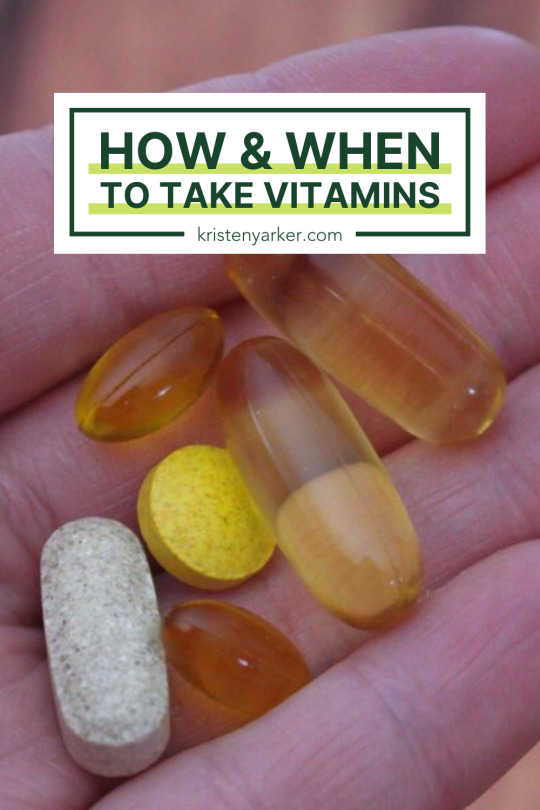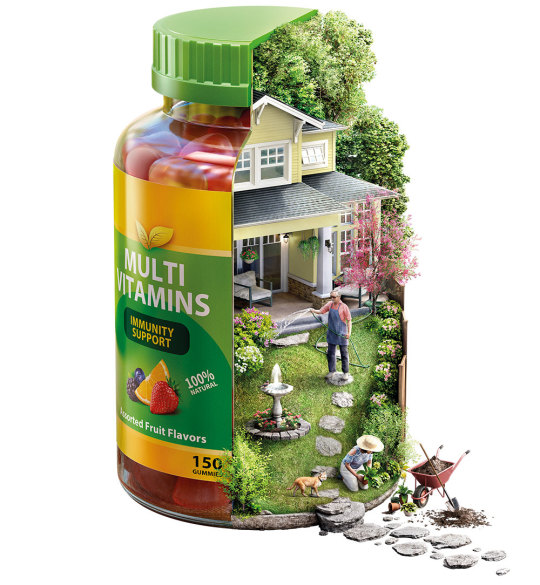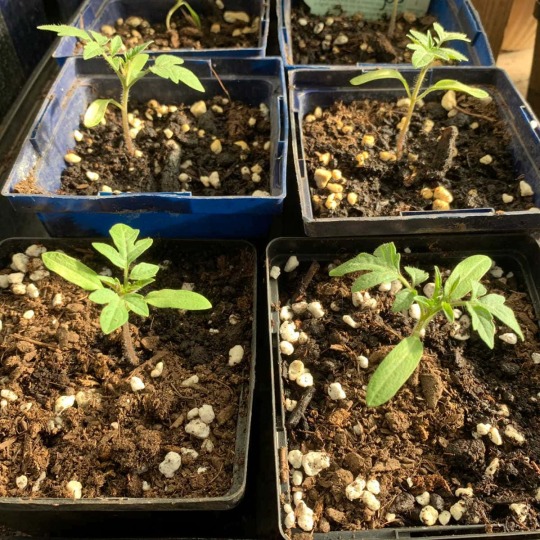Don't wanna be here? Send us removal request.
Text
5 Creative Keto Lunch Ideas for Work or School

Unlock the path to keto success with The Ultimate Keto Meal Plan – your blueprint to delicious, satisfying, and sustainable low-carb living.
Introduction
The ketogenic diet, characterized by its emphasis on high-fat, moderate-protein, and low-carbohydrate foods, has gained popularity for its potential health benefits, including weight loss, improved energy levels, and enhanced mental clarity. When it comes to maintaining adherence to the ketogenic lifestyle, creative and delicious lunch ideas can play a crucial role in keeping individuals on track with their dietary goals, especially during busy workdays or school hours.
Benefits of Keto Lunches
Sustained energy levels throughout the day: By focusing on nutrient-dense foods rich in healthy fats and proteins, keto lunches provide a steady source of energy that helps prevent midday crashes and fatigue.
Improved mental clarity and focus: Eliminating high-carb meals and snacks reduces blood sugar spikes and crashes, leading to better cognitive function and mental alertness.
Enhanced weight management and fat loss: The ketogenic diet promotes fat burning as the primary source of fuel, making it an effective tool for weight loss and body composition improvement.
Key Components of a Keto Lunch
High-quality protein sources: Incorporating protein-rich foods like poultry, fish, eggs, and tofu helps promote muscle repair and growth while keeping you feeling full and satisfied.
Healthy fats: Including sources of healthy fats such as avocado, nuts, seeds, and olive oil provides essential nutrients and supports ketosis, the metabolic state where the body burns fat for fuel.
Low-carbohydrate vegetables and greens: Opting for non-starchy vegetables like leafy greens, cauliflower, zucchini, and bell peppers adds fiber, vitamins, and minerals to your meal without significantly impacting blood sugar levels.
Creative Keto Lunch Ideas

Unlock the path to keto success with The Ultimate Keto Meal Plan – your blueprint to delicious, satisfying, and sustainable low-carb living.
Keto Chicken Cobb Salad: Combine grilled chicken breast, crispy bacon, hard-boiled eggs, avocado slices, cherry tomatoes, and crumbled feta cheese on a bed of mixed greens, drizzled with a creamy ranch or vinaigrette dressing.
Zucchini Noodles with Pesto and Grilled Chicken: Spiralize zucchini into noodles and toss with homemade or store-bought pesto sauce, grilled chicken strips, cherry tomatoes, and Parmesan cheese for a flavorful and satisfying pasta alternative.
Cauliflower Fried Rice with Shrimp: Stir-fry cauliflower rice with shrimp, scrambled eggs, diced vegetables, and soy sauce for a low-carb and protein-packed lunch option that's ready in minutes.
Turkey Avocado Lettuce Wraps: Fill large lettuce leaves with sliced turkey breast, mashed avocado, crispy bacon strips, and thinly sliced cucumber or bell pepper for a light yet filling handheld meal.
Keto-Friendly Stuffed Bell Peppers: Hollow out bell peppers and fill them with a mixture of cooked ground beef or turkey, cauliflower rice, diced tomatoes, onions, and shredded cheese, then bake until tender for a flavorful and nutritious lunch option.
Tips for Preparing Keto Lunches
Meal prepping and planning ahead: Spend some time on weekends or evenings preparing keto-friendly ingredients and meals in advance to streamline your lunchtime routine during busy weekdays.
Utilizing leftovers from dinner for lunch: Repurpose leftover proteins, vegetables, and sauces from dinner to create new and exciting keto lunches, reducing food waste and saving time in the kitchen.
Investing in convenient and portable lunch containers: Invest in high-quality, leak-proof containers that are easy to transport and keep your keto lunches fresh and appetizing until mealtime.
Incorporating Variety and Flavor

Unlock the path to keto success with The Ultimate Keto Meal Plan – your blueprint to delicious, satisfying, and sustainable low-carb living.
Experimenting with different spices and herbs: Elevate the flavor profile of your keto lunches by incorporating a variety of herbs, spices, and seasonings such as garlic, ginger, turmeric, and fresh herbs like basil, cilantro, and parsley.
Adding texture with nuts, seeds, and cheese: Enhance the texture and mouthfeel of your keto meals by incorporating crunchy elements like toasted nuts, seeds, or cheese crisps, adding depth and complexity to each bite.
Exploring international cuisines for inspiration: Draw inspiration from global cuisines such as Mediterranean, Asian, or Latin American and adapt traditional recipes to fit within the parameters of the ketogenic diet, exploring new flavors and ingredients along the way.
Overcoming Challenges of Keto Lunches
Addressing cravings for carb-heavy meals: Combat cravings for carb-heavy comfort foods by experimenting with keto-friendly alternatives that mimic the flavors and textures of your favorite dishes, satisfying your cravings without derailing your diet.
Finding suitable options for individuals with dietary restrictions: Adapt keto lunch recipes to accommodate specific dietary needs and preferences, such as gluten-free, dairy-free, or vegetarian, ensuring inclusivity and accessibility for all.
Ensuring satiety and satisfaction with keto-friendly meals: Focus on creating balanced and satiating meals that include a combination of protein, healthy fats, and fiber-rich vegetables to promote feelings of fullness and satisfaction, preventing overeating and unnecessary snacking.
Importance of Hydration and Side Accompaniments

Unlock the path to keto success with The Ultimate Keto Meal Plan – your blueprint to delicious, satisfying, and sustainable low-carb living.
Drinking an adequate amount of water throughout the day: Stay hydrated by drinking plenty of water between meals, helping support digestion, metabolism, and overall well-being on a ketogenic diet.
Pairing lunches with keto-friendly beverages like herbal tea or infused water: Accompany your keto lunches with hydrating and refreshing beverages such as herbal teas, sparkling water, or infused water flavored with fresh herbs or citrus fruits, adding a burst of flavor without the added sugars or carbs.
Including side dishes such as olives, pickles, or a small serving of berries: Round out your keto lunches with nutritious and satisfying side accompaniments like briny olives, tangy pickles, or a handful of antioxidant-rich berries, enhancing the flavor and texture of your meal while providing additional vitamins and minerals.
The Role of Mindful Eating
Paying attention to hunger cues and satiety signals: Practice mindful eating by tuning in to your body's hunger and fullness cues, eating slowly and savoring each bite to prevent overeating and promote a greater sense of satisfaction and enjoyment from your meals.
Practicing mindful portion control to avoid overeating: Be mindful of portion sizes and serving sizes when preparing and consuming your keto lunches, using measuring tools or visual cues to gauge appropriate portions and prevent excess calorie intake.
Enjoying the sensory experience of each meal without distractions: Create a peaceful and conducive environment for eating by minimizing distractions such as television, smartphones, or work-related tasks, allowing yourself to fully engage with the sensory experience of eating and appreciate the flavors, textures, and aromas of your keto lunches.
Conclusion
Creative keto lunches offer a delicious and satisfying way to fuel your body and mind while adhering to the principles of the ketogenic diet. By incorporating nutrient-dense ingredients, experimenting with flavors and textures, and practicing mindful eating habits, you can enjoy a variety of delicious and nourishing meals that support your health and wellness goals. Whether you're packing lunch for work or school, or enjoying a midday meal at home, these creative keto lunch ideas provide inspiration and guidance for maintaining a sustainable and enjoyable ketogenic lifestyle. Embrace the culinary possibilities of the ketogenic diet and elevate your lunchtime experience with delicious and satisfying meals that nourish your body and delight your taste buds.
DISCLAIMER: This Post contains some affiliate links about Ultimate Keto Diet Plans.
#wellnessjourney#healthandwellness#healthylifestyle#healthyhabits#healthyliving#Keto#ketodiets#ultimateketodietplans#KetoMealPlan#LowCarbLiving#KetoSuccess#KetoLife#HealthyRecipes#EatWellLiveWell#DeliciousDiet
0 notes
Text
Top 5 Keto-Friendly Desserts That Won't Ruin Your Diet

Introduction
In the world of dietary regimens, the ketogenic diet stands out for its focus on high-fat, low-carb eating. It's a lifestyle that emphasizes the consumption of healthy fats and restricts carbohydrates to induce a state of ketosis, where the body burns fat for fuel instead of glucose. While adhering to this diet can be challenging, especially for those with a sweet tooth, the availability of keto-friendly desserts makes the journey more enjoyable and sustainable.
Elevate your keto culinary journey with The Keto Air Fryer Cookbook, where delicious meets healthy in every crispy bite.
Understanding Keto-Friendly Desserts
When it comes to desserts suitable for a ketogenic diet, certain criteria must be met to ensure they align with the principles of the regimen. Keto-friendly desserts are typically low in carbohydrates and sugar while being rich in healthy fats. They often utilize alternative sweeteners and flours that have minimal impact on blood sugar levels. Common ingredients found in keto desserts include almond flour, coconut flour, cocoa powder, and sugar substitutes like erythritol or stevia.
Top 5 Keto-Friendly Desserts

Elevate your keto culinary journey with The Keto Air Fryer Cookbook, where delicious meets healthy in every crispy bite.
Keto Chocolate Avocado Mousse
This decadent dessert combines ripe avocados with cocoa powder, coconut milk, and a low-carb sweetener to create a creamy and indulgent mousse. Avocados provide a creamy texture and healthy fats, while cocoa powder adds rich chocolate flavor without the added sugar.
Low-Carb Cheesecake with Almond Flour Crust
A classic dessert gets a keto-friendly makeover with this recipe featuring a buttery almond flour crust and a creamy, tangy cheesecake filling sweetened with erythritol or stevia. It's the perfect balance of sweetness and richness without the carb-laden guilt.
Sugar-Free Coconut Macaroons
These chewy and coconutty treats are made with shredded coconut, egg whites, and a sugar-free sweetener. They're easy to whip up and satisfy cravings for something sweet and satisfying without derailing ketosis.
Berry Chia Seed Pudding
Chia seeds are a nutritional powerhouse, packed with fiber, protein, and healthy fats. When combined with unsweetened almond milk, vanilla extract, and a touch of low-carb sweetener, they transform into a creamy pudding base that pairs perfectly with fresh berries for a refreshing and guilt-free dessert option.
Almond Flour Brownies
Indulge your chocolate cravings with these fudgy almond flour brownies that are both keto-friendly and delicious. Almond flour provides a moist and tender texture, while sugar substitutes like erythritol or monk fruit keep the carb count low without sacrificing sweetness.
Benefits of Keto-Friendly Desserts

Elevate your keto culinary journey with The Keto Air Fryer Cookbook, where delicious meets healthy in every crispy bite.
Incorporating keto-friendly desserts into your meal plan offers several advantages beyond satisfying your sweet tooth. These desserts help curb cravings for sugary treats while keeping you in ketosis, making it easier to stick to your dietary goals. Additionally, they provide alternative options for individuals with dietary restrictions, such as those following gluten-free or diabetic-friendly diets.
Tips for Making Keto-Friendly Desserts
When making keto-friendly desserts at home, it's essential to choose ingredients wisely to ensure they fit within your carb limits. Opt for low-carb sweeteners like stevia, erythritol, or monk fruit instead of sugar. Incorporate high-fat ingredients such as coconut oil, avocado, or cream cheese to boost the fat content and keep you feeling satisfied.
Precautions and Considerations
While keto-friendly desserts can be a delicious addition to your meal plan, it's crucial to practice moderation and be mindful of portion sizes. Even though they're low in carbs, overconsumption of keto desserts can still lead to excess calorie intake, which may hinder weight loss efforts. Additionally, always check ingredient labels for hidden sugars and carbs, as some products marketed as "sugar-free" may still contain hidden sources of carbohydrates.
Where to Find Keto-Friendly Dessert Recipes
If you're looking for inspiration or new recipe ideas, there are plenty of resources available for finding keto-friendly dessert recipes. Online keto recipe blogs and websites offer a wealth of creative and delicious options, ranging from simple no-bake treats to elaborate baked goods. Additionally, many keto cookbooks and recipe collections feature dessert chapters filled with mouthwatering sweets to satisfy your cravings.
Experimenting with Flavor Variations
One of the joys of cooking and baking on a ketogenic diet is the opportunity to experiment with different flavor combinations and ingredients. Whether you prefer classic flavors like chocolate and vanilla or more adventurous combinations like matcha or lavender, there's no shortage of options to explore. Don't be afraid to get creative and add spices, extracts, or nuts to your desserts for added flavor and texture without the extra carbs.
Incorporating Keto-Friendly Desserts into Meal Plans

Elevate your keto culinary journey with The Keto Air Fryer Cookbook, where delicious meets healthy in every crispy bite.
When planning your meals on a ketogenic diet, don't forget to include keto-friendly desserts as part of your overall dietary strategy. By incorporating these treats into your meal plan, you can enjoy delicious sweets while staying within your carb limits and maintaining ketosis. Just remember to balance your dessert choices with nutrient-dense meals that provide essential vitamins, minerals, and macronutrients for optimal health and well-being.
Conclusion
Keto-friendly desserts offer a delicious and satisfying way to indulge your sweet cravings while staying true to your dietary goals. From rich and creamy mousses to chewy coconut macaroons, there's a keto-friendly dessert for every palate and preference. By choosing high-quality ingredients, practicing moderation, and getting creative in the kitchen, you can enjoy delicious sweets without ruining your diet.
DISCLAIMER: This Post contains affiliate links of Ultimate Keto Diet Plans.
#wellnessjourney#healthyliving#healthyhabits#healthandwellness#Ketodiets#Ketorecipes#healthylifestyle#keto#KetoCooking#KetoKitchen#KetoAirFryerCookbook#CrispyCravings
0 notes
Text
LeapDay2024

Introduction
Leap Day, also known as February 29th, occurs only once every four years, making it a rare and unique occurrence in the Gregorian calendar. This article explores the significance of Leap Day, its history, traditions, and its impact on various aspects of society.
Unlock a world of vibrant health and vitality with CreateRawVision's Members Area: Your passport to the raw food lifestyle!
History of Leap Day
The origins of Leap Day can be traced back to the ancient Romans, who first introduced the concept of leap years to align their lunar calendar with the solar year. Over time, Leap Day became a globally recognized phenomenon, with different cultures adopting their interpretations and traditions surrounding this extra day.
The Leap Year Rule
Understanding the Gregorian calendar is essential to grasp the concept of Leap Day. The leap year rule, which states that a year is a leap year if it is divisible by 4 but not divisible by 100 unless it is also divisible by 400, governs the occurrence of Leap Day.
Leap Day Traditions and Superstitions
Leap Day is often associated with traditions and superstitions, such as the custom of women proposing to men on this day. Additionally, Leap Day serves as a day of balance and reflection, prompting individuals to take stock of their lives and make bold decisions.
Unlock a world of vibrant health and vitality with CreateRawVision's Members Area: Your passport to the raw food lifestyle!
Leap Day Celebrations around the World

From extravagant festivals to intimate gatherings, Leap Day is celebrated in various ways across the globe. Each culture infuses its unique significance into the festivities, creating a rich tapestry of traditions and rituals.
Unlock a world of vibrant health and vitality with CreateRawVision's Members Area: Your passport to the raw food lifestyle!
Leap Day in Popular Culture
References to Leap Day abound in literature, film, and television, showcasing its enduring presence in popular culture. Leap Day events in the entertainment industry further amplify this rare occurrence's excitement.
Leap Day Birthdays
Individuals born on Leap Day, known as "leaplings," face challenges and benefits associated with their unique birth date. Despite the statistical rarity of Leap Day births, leaplings form a tight-knit community bound by their shared experience.
Leap Day as a Day of Action

Many organizations seize the opportunity of Leap Day to promote social change and engage in charitable initiatives. From volunteering to fundraising, Leap Day catalyzes positive action and community involvement.
Unlock a world of vibrant health and vitality with CreateRawVision's Members Area: Your passport to the raw food lifestyle!
Leap Day Sales and Promotions
Businesses capitalize on the novelty of Leap Day by offering special sales and promotions to attract customers. Strategic marketing campaigns leverage the excitement surrounding this once-in-four-year event to drive sales and increase brand visibility.
Leap Day as a Global Phenomenon
Leap Day transcends borders, uniting people around the world in a shared celebration of time's fleeting nature. International initiatives raise awareness about Leap Day's significance and foster global cooperation.
Leap Day and Climate Change
In an era of environmental consciousness, Leap Day takes on added significance as a reminder of humanity's impact on the planet. Sustainable initiatives aim to mitigate environmental degradation and promote a healthier future for generations to come.
Conclusion
As Leap Day 2024 draws to a close, we reflect on the fleeting nature of time and the enduring significance of this rare occurrence. Whether marked by celebrations or quiet contemplation, Leap Day is a poignant reminder to seize the moment and make every day count. Looking forward to the next Leap Day, we embrace the opportunity for renewal, growth, and positive change.
DISCLAIMER: This post contains affiliate links.
#leapday#leapdaymeans#leapdaywilliam#leapdayreadaloud#leapdayforkids#leapdaymeaning#leapdaybrainbreak#leapdayclipart#RareOccasion#EcoFriendlyEating#leapday2024#leapyear#leapday2028
0 notes
Text
When to Incorporate Supplements into Your Daily Routine?

Introduction
Supplements are becoming increasingly popular as people seek to optimize their health and well-being. But when is the right time to start incorporating supplements into your daily routine? In this article, we'll explore the factors to consider, signs you may need supplements, the best times to take them, and how to safely integrate them into your lifestyle.
Discover the secret to radiant vitality with our groundbreaking product.
Understanding Supplements
Supplements come in various forms, including vitamins, minerals, and herbal extracts, each offering unique health benefits. Understanding the role of supplements and their benefits is essential before incorporating them into your routine.
Types of Supplements
Vitamins: Essential micronutrients that support various bodily functions, such as immune health, energy production, and cell repair.
Minerals: Inorganic compounds vital for maintaining bone health, muscle function, and nerve transmission.
Herbal Supplements: Plant-based extracts with medicinal properties that promote overall health and well-being.
Benefits of Supplements

Supplements offer numerous benefits, including:
A. Fill Nutritional Gaps: Supplements can help bridge the gap between the nutrients you need and the nutrients you consume through diet alone.
B. Support Overall Health and Well-being: Certain supplements, such as multivitamins and omega-3 fatty acids, support heart health, brain function, and immune function.
C. Enhance Performance and Recovery: Athletes and fitness enthusiasts often use supplements like protein powders and creatine to improve performance, enhance recovery, and build lean muscle mass.
Discover the secret to radiant vitality with our groundbreaking product.
Factors to Consider
Before incorporating supplements into your daily routine, consider the following factors:
A. Individual Nutritional Needs: Assess your diet, lifestyle, and health goals to determine which supplements may be beneficial for you.
B. Lifestyle and Dietary Habits: Consider your dietary habits, such as restricted diets or food allergies, and how they may impact your nutrient intake.
C. Health Conditions and Medications: Consult with a healthcare professional to identify any underlying health conditions or medications that may affect your nutrient absorption or metabolism.
Signs You May Need Supplements

Certain signs and symptoms may indicate that you could benefit from supplements:
A. Fatigue and Low Energy Levels: Persistent fatigue and low energy levels may indicate a deficiency in essential nutrients like iron or vitamin B12.
B. Weak Immune System: Frequent illnesses or infections may suggest a weakened immune system that could benefit from immune-boosting supplements like vitamin C or zinc.
C. Poor Digestive Health: Digestive issues such as bloating, gas, or constipation may indicate a need for probiotics or digestive enzymes.
D. Hair, Skin, and Nail Issues: Brittle nails, dry skin, or hair loss may be signs of nutrient deficiencies like biotin, vitamin E, or omega-3 fatty acids.
E. Muscle Cramps and Bone Health Concerns: Muscle cramps or joint pain may suggest a deficiency in minerals like calcium, magnesium, or vitamin D.
Discover the secret to radiant vitality with our groundbreaking product.
Best Times to Take Supplements

Consider the following factors when determining the best times to take supplements:
A. Morning vs. Evening: Some supplements are best taken in the morning to provide energy and support throughout the day, while others may be more effective when taken in the evening to promote relaxation and sleep.
B. With or Without Food: Some supplements are better absorbed when taken with food to enhance digestion and absorption, while others may be taken on an empty stomach for optimal absorption.
C. Timing Based on Specific Nutrients: Certain supplements, such as vitamin D, are best taken in the morning to optimize natural sunlight exposure and support circadian rhythms.
How to Incorporate Supplements
Follow these tips to successfully incorporate supplements into your daily routine:
A. Establishing a Routine: Take supplements at the same time each day to establish a consistent routine and maximize adherence.
B. Setting Realistic Goals: Set realistic health goals and expectations for supplement use, and track your progress over time.
C. Consulting with Healthcare Professionals: Consult with a healthcare professional before starting any new supplement regimen, especially if you have underlying health conditions or are taking medications.
D. Monitoring Progress and Adjusting as Needed: Monitor your health and well-being regularly, and adjust your supplement regimen as needed based on your individual needs and goals.
Discover the secret to radiant vitality with our groundbreaking product.
Safety Considerations
Before incorporating supplements into your routine, consider the following safety considerations:
A. Potential Interactions with Medications: Be aware of potential interactions between supplements and medications, and consult with a healthcare professional before starting any new supplement regimen.
B. Adverse Effects and Allergic Reactions: Pay attention to any adverse effects or allergic reactions to supplements, and discontinue use if you experience any negative symptoms.
C. Proper Dosage and Potency: Follow the recommended dosage guidelines for supplements to avoid the risk of overdose or toxicity, and choose supplements with appropriate potency levels for your needs.
D. Quality and Purity of Supplements: Select supplements from reputable brands that adhere to strict quality control standards and third-party testing to ensure safety and efficacy.
Tips for Successful Integration

Follow these tips for successfully integrating supplements into your daily routine:
A. Start Slowly and Gradually: Introduce supplements one at a time and gradually increase dosage as needed to minimize the risk of adverse effects or reactions.
B. Read Labels Carefully: Read supplement labels carefully to ensure you understand the ingredients, dosage, and instructions for use.
C. Store Supplements Properly: Store supplements in a cool, dry place away from direct sunlight and moisture, and follow the manufacturer's instructions for proper storage.
D. Stay Informed and Educated: Stay informed about the latest research and developments in the supplement industry, and educate yourself about the benefits, risks, and safety considerations of different supplements.
Discover the secret to radiant vitality with our groundbreaking product.
Conclusion
In conclusion, incorporating supplements into your daily routine can be a beneficial way to support your overall health and well-being, but it's essential to do so wisely and responsibly. By understanding the types of supplements available, the factors to consider before starting a supplement regimen, and the best times to take supplements, you can optimize their effectiveness and minimize potential risks.
Before incorporating supplements into your routine, it's important to assess your individual nutritional needs, lifestyle habits, and health goals. Consulting with a healthcare professional can provide valuable insights and guidance tailored to your specific needs and circumstances. Additionally, paying attention to signs and symptoms that may indicate nutrient deficiencies can help you determine which supplements may be beneficial for you.
When it comes to timing, consider factors such as whether to take supplements in the morning or evening, with or without food, and based on the specific nutrients you're supplementing. Establishing a consistent routine and setting realistic goals can help you stay on track and monitor your progress over time.
Safety should always be a top priority when incorporating supplements into your daily routine. Be aware of potential interactions with medications, adverse effects, and allergic reactions. It's essential to follow recommended dosage guidelines, choose supplements from reputable brands, and store them properly to maintain their potency and effectiveness.
In conclusion, incorporating supplements into your daily routine can be a valuable tool for supporting your health and well-being. By understanding the factors to consider, the best times to take supplements, and how to do so safely and responsibly, you can harness the benefits of supplements to optimize your health and vitality. Remember to consult with a healthcare professional and stay informed and educated about the latest research and developments in the supplement industry. With the right approach, supplements can be powerful allies on your journey to better health and wellness.
DISCLAIMER: This post contains Affiliate links.
#HealthyHabits#WellnessJourney#NutritionGoals#HealthAndWellness#DailySupplements#OptimalNutrition#SelfCareRoutine#WellnessWednesday#HealthGoals#HealthyLiving#SupplementSafety#WellnessTips#NutritionEducation#StayInformed#HealthyLifestyle#WellnessSupport#Health#Healthcare
0 notes
Text
How to Boost Your Health with Supplements?

Introduction
Supplements play a crucial role in supporting overall health and well-being by providing essential nutrients that may be lacking in our diets. In today's fast-paced world, where nutrient-depleted foods and hectic lifestyles are common, supplements offer a convenient and effective way to fill nutritional gaps and optimize health. In this article, we will explore the benefits of supplements, how to choose the right ones for your needs, and how to incorporate them into your daily routine.
Unlock the potential of vibrant health with our Revolutionary Supplement.
Understanding Supplements
Supplements come in various forms, including vitamins, minerals, herbal extracts, and protein powders. Each type of supplement serves a unique purpose and offers specific health benefits. Understanding how supplements work at the molecular level is essential for maximizing their effectiveness.
Types of Supplements
Vitamins: Essential micronutrients that play key roles in various physiological processes, such as energy production, immune function, and cell repair.
Minerals: Inorganic compounds that are essential for maintaining proper bodily functions, including bone health, muscle contraction, and nerve transmission.
Herbal Supplements: Plant-based extracts that are used for their medicinal properties, such as improving digestion, reducing inflammation, and boosting immunity.
Protein Supplements: Protein powders derived from sources such as whey, soy, and pea protein, which are commonly used to support muscle growth, repair, and recovery.
Mechanisms of Action
Absorption: The process by which nutrients from supplements are taken up by the body's cells and tissues for use in various physiological functions.
Metabolism: The chemical processes by which nutrients from supplements are broken down and transformed into energy or other metabolites.
Bioavailability: The degree to which nutrients from supplements are absorbed and utilized by the body, influenced by factors such as formulation, dosage, and individual physiology.
Unlock the potential of vibrant health with our Revolutionary Supplement.
Benefits of Supplements

Supplements offer a wide range of benefits for overall health and well-being, including:
A. Filling Nutritional Gaps: Supplements can help bridge the gap between the nutrients we need and the nutrients we actually consume through diet alone.
B. Supporting Overall Health and Well-being: Certain supplements, such as multivitamins and omega-3 fatty acids, have been shown to support heart health, brain function, and immune function.
C. Enhancing Performance and Recovery: Athletes and fitness enthusiasts often use supplements like protein powders and creatine to improve performance, enhance recovery, and build lean muscle mass.
D. Boosting Immune Function: Certain supplements, such as vitamin C, zinc, and echinacea, may help strengthen the immune system and reduce the risk of infections.
E. Promoting Longevity and Vitality: Some supplements, such as antioxidants and adaptogens, are believed to support longevity and vitality by protecting against oxidative stress and supporting cellular health.
Factors to Consider When Choosing Supplements

When selecting supplements, it is important to consider factors such as:
Unlock the potential of vibrant health with our Revolutionary Supplement.
A. Quality and Purity: Choose supplements from reputable brands that adhere to strict quality control standards and third-party testing.
B. Ingredient Transparency: Look for supplements with transparent ingredient lists and clear labeling to ensure you know exactly what you're putting into your body.
C. Dosage and Potency: Opt for supplements that provide the recommended dosage of key nutrients and are formulated for optimal absorption and bioavailability.
D. Formulation and Delivery Method: Consider the formulation and delivery method of supplements, such as capsules, tablets, powders, or liquids, to determine which is most convenient and effective for your needs.
E. Compatibility with Lifestyle and Health Goals: Select supplements that align with your lifestyle, dietary preferences, and health goals to ensure long-term adherence and effectiveness.
Common Types of Supplements and Their Benefits
Vitamin D: Essential for bone health, immune function, and mood regulation.
Omega-3 Fatty Acids: Support heart health, brain function, and joint health.
Probiotics: Promote gut health, digestion, and immune function.
Multivitamins: Provide a comprehensive blend of essential vitamins and minerals for overall health and well-being.
Antioxidants: Protect against oxidative stress and support cellular health and longevity.
How to Incorporate Supplements into Your Daily Routine

To reap the benefits of supplements, follow these tips:
A. Establishing a Routine: Take supplements at the same time each day to establish a consistent routine and maximize adherence.
B. Setting Realistic Goals: Set realistic health goals and expectations for supplement use, and track your progress over time.
C. Consulting with Healthcare Professionals: Consult with a healthcare professional before starting any new supplement regimen, especially if you have underlying health conditions or are taking medications.
D. Monitoring Progress and Adjusting as Needed: Monitor your health and well-being regularly, and adjust your supplement regimen as needed based on your individual needs and goals.
Unlock the potential of vibrant health with our Revolutionary Supplement.
Safety Considerations
While supplements can offer many health benefits, it is important to use them safely and responsibly:
A. Potential Interactions with Medications: Be aware of potential interactions between supplements and medications, and consult with a healthcare professional before starting any new supplement regimen.
B. Adverse Effects and Allergic Reactions: Pay attention to any adverse effects or allergic reactions to supplements, and discontinue use if you experience any negative symptoms.
C. Proper Storage and Handling: Store supplements in a cool, dry place away from direct sunlight and moisture, and follow the manufacturer's instructions for proper storage and handling to ensure their potency and effectiveness.
D. Avoiding Overdose and Toxicity: Follow the recommended dosage guidelines for supplements to avoid the risk of overdose or toxicity, especially with fat-soluble vitamins like vitamin A and vitamin D.
Myths and Misconceptions About Supplements

Despite their proven benefits, there are several myths and misconceptions surrounding the use of supplements:
A. All Supplements Are Created Equal: Not all supplements are of the same quality or purity. It's essential to choose supplements from reputable brands that adhere to strict quality control standards.
B. Supplements Are a Replacement for Healthy Eating: While supplements can complement a healthy diet, they should not be used as a substitute for nutritious foods. Whole foods provide a wide range of nutrients that work synergistically to support health.
C. More Is Always Better: Taking excessive amounts of supplements can be harmful and may lead to adverse effects or toxicity. It's important to follow the recommended dosage guidelines and avoid megadoses unless advised by a healthcare professional.
D. Supplements Are Only for Athletes and Bodybuilders: Supplements are beneficial for individuals of all ages and fitness levels, not just athletes and bodybuilders. They can support overall health, vitality, and well-being for everyone.
E. Supplements Are Not Regulated by the FDA: While the FDA does not regulate supplements as strictly as pharmaceutical drugs, supplement manufacturers are required to follow certain regulations and quality standards to ensure safety and efficacy.
Conclusion
In conclusion, supplements can be powerful tools for boosting health and well-being when used correctly and responsibly. By understanding the different types of supplements, their benefits, and how to choose and incorporate them into your daily routine, you can optimize your health and vitality. Remember to prioritize quality, transparency, and safety when selecting supplements, and consult with a healthcare professional if you have any questions or concerns. With the right approach, supplements can be valuable allies on your journey to better health and wellness.
DISCLAIMER: This post contains affiliate links.
#music#WellnessBoost#HealthyLiving#healthylifestyle#NaturalSupplements#WellnessWarrior#HealthIsWealth#SelfCareJourney#nasa#HealthyHabits#nike#wellnessjourney#healthandwellness#health benefits#HealthFromWithin#WellnessWednesday#healthsupplement#bestsupplements#bodybooster
0 notes
Text
How to Start a Medicinal Garden Kit

Introduction
A medicinal garden kit is a curated collection of plants specifically chosen for their therapeutic properties. Delving into the world of medicinal gardening offers not only the opportunity to cultivate a green space but also the chance to nurture health and well-being through nature's remedies. In this guide, we'll explore the essential steps to kickstart your own medicinal garden kit, from plant selection to harvesting techniques.
Selecting Suitable Plants

Researching Medicinal Plants
Embark on your medicinal gardening journey by researching various medicinal plants suited to your region and climate. Consider factors such as the plant's growth requirements, medicinal properties, and compatibility with your gardening space.
Discover the power of nature's remedies with our BRAND NEW Medicinal Garden Kit!
Climate and Soil Considerations
Understanding your local climate and soil conditions is crucial for selecting plants that thrive in your area. Some medicinal herbs prefer well-drained soil and full sunlight, while others thrive in partial shade or moist, loamy soil.
Space and Container Options
Whether you have a spacious backyard or a compact balcony, there are options for cultivating medicinal plants. Assess your available space and explore container gardening if land is limited. Containers offer flexibility and can be placed strategically to optimize sunlight exposure.
Planning and Designing the Garden

Sketching Out the Layout
Before diving into planting, sketch out a rough layout of your medicinal garden. Consider factors such as plant height, spacing, and aesthetics. A well-thought-out design ensures efficient use of space and enhances the visual appeal of your garden.
Discover the power of nature's remedies with our BRAND NEW Medicinal Garden Kit!
Companion Planting Strategies
Implement companion planting techniques to enhance plant health and discourage pests. Certain plants have symbiotic relationships that benefit one another, such as repelling pests or attracting beneficial insects. Research companion planting combinations to maximize the productivity of your garden.
Incorporating Aesthetics and Accessibility
Blend functionality with beauty by incorporating aesthetic elements into your garden design. Arrange plants in visually appealing patterns and consider adding pathways or seating areas for easy access and enjoyment. Creating an inviting space encourages regular interaction with your medicinal garden.
Procuring Quality Seeds or Seedlings

Sourcing Reliable Seed Suppliers
Choose reputable seed suppliers known for their high-quality, non-GMO seeds. Look for suppliers specializing in medicinal plants and prioritize organic and heirloom varieties whenever possible. Quality seeds are the foundation for a successful medicinal garden.
Discover the power of nature's remedies with our BRAND NEW Medicinal Garden Kit!
Ensuring Seed Viability
Perform a germination test to assess the viability of your seeds before planting. This simple process involves placing seeds between moist paper towels and monitoring their sprouting rate. Discard any seeds that fail to germinate, ensuring optimal plant growth and productivity.
Understanding Seed Germination and Growth
Requirements
Each medicinal plant has unique germination and growth requirements. Some seeds require stratification or scarification before planting, while others prefer direct sowing in prepared soil. Research the specific needs of your chosen plants to ensure successful germination and healthy growth.
Discover the power of nature's remedies with our BRAND NEW Medicinal Garden Kit!
Preparing the Soil

Soil Testing and Amendment
Begin by testing your soil to assess its pH levels and nutrient content. Soil testing kits are readily available and provide valuable insights for soil amendment. Adjust the pH levels and enrich the soil with organic matter, such as compost or aged manure, to create an optimal growing environment for medicinal plants.
Organic Soil Preparation Methods
Embrace organic soil preparation methods to foster healthy plant growth and minimize environmental impact. Avoid synthetic fertilizers and pesticides, opting instead for organic alternatives that nourish the soil microbiome and promote natural pest resistance. Prioritize soil health as the foundation of a thriving medicinal garden.
Mulching Techniques for Soil Health
Apply mulch to retain moisture, suppress weeds, and improve soil structure in your medicinal garden. Organic mulch materials, such as straw, leaves, or wood chips, provide a protective layer that conserves soil moisture and moderates temperature fluctuations. Mulching reduces the need for frequent watering and promotes overall soil health.
Discover the power of nature's remedies with our BRAND NEW Medicinal Garden Kit!
Planting Techniques

Seed Sowing Guidelines
Follow specific seed sowing guidelines for each medicinal plant to ensure optimal germination and growth. Some seeds require shallow planting, while others need to be sown at a certain depth. Pay attention to spacing recommendations to prevent overcrowding and competition among plants.
Transplanting Seedlings
If starting from seedlings, handle them with care during transplanting to minimize stress and root damage. Ensure that seedlings are well-acclimated to outdoor conditions before transplanting them into the garden soil. Water newly transplanted seedlings thoroughly to help them establish roots in their new environment.
Proper Spacing and Depth Considerations
Maintain proper spacing between plants to allow for adequate air circulation and minimize the risk of disease spread. Consult planting guides or seed packets for recommended spacing distances specific to each medicinal herb. Plant seeds or seedlings at the appropriate depth according to their individual requirements for successful establishment.
Discover the power of nature's remedies with our BRAND NEW Medicinal Garden Kit!
Implementing Care and Maintenance Practices

Watering Frequency and Methods
Establish a regular watering schedule based on the moisture needs of your medicinal plants and environmental conditions. Aim for deep, infrequent watering to encourage deep root growth and drought tolerance. Use watering methods that deliver water directly to the root zone while minimizing water waste.
Organic Pest and Disease Management
Preventative measures are key to managing pests and diseases in a medicinal garden. Monitor plants regularly for signs of pest infestations or disease symptoms and intervene promptly using organic pest control methods such as companion planting, hand-picking pests, or applying natural insecticidal soaps.
Nutrient Supplementation Techniques
Maintain plant health and vitality by providing essential nutrients through organic fertilization methods. Incorporate compost or organic fertilizers rich in nitrogen, phosphorus, and potassium to support robust growth and maximize medicinal plant yield. Apply fertilizers sparingly and according to plant-specific nutrient requirements.
Discover the power of nature's remedies with our BRAND NEW Medicinal Garden Kit!
Harvesting and Preserving Medicinal Plants

Timing for Optimal Harvest
Harvest medicinal plants at the peak of their potency for maximum therapeutic benefits. Timing varies depending on the plant part used and its intended use. Harvest leaves and flowers in the morning when their essential oils are most concentrated, and collect roots and seeds during the plant's dormant period for optimal yield.
Drying and Storing Herbs
Proper drying and storage techniques are essential for preserving the potency and flavor of medicinal herbs. Air-dry harvested herbs in a well-ventilated area away from direct sunlight to prevent mold and mildew growth. Once dried, store herbs in airtight containers in a cool, dark place to maintain their quality and shelf life.
Extracting and Processing Medicinal Compounds
Explore various methods for extracting medicinal compounds from fresh or dried herbs, including decoctions, infusions, tinctures, and oils. Experiment with different extraction techniques to capture the full spectrum of beneficial plant constituents and enhance the therapeutic efficacy of your herbal preparations.
Discover the power of nature's remedies with our BRAND NEW Medicinal Garden Kit!
Incorporating Sustainable Practices
Composting for Soil Fertility
Harness the power of composting to recycle organic waste and enrich your garden soil with essential nutrients. Start a compost pile using kitchen scraps, yard trimmings, and other organic materials, and allow them to decompose into nutrient-rich humus. Regularly turn the compost pile to aerate it and speed up the decomposition process, creating a valuable soil amendment for your medicinal garden.
Using Rainwater Harvesting Systems
Maximize water conservation in your medicinal garden by implementing rainwater harvesting systems. Install rain barrels or cisterns to capture rainwater from rooftops and other impermeable surfaces. Use collected rainwater to irrigate your garden, reducing reliance on municipal water sources and minimizing water waste.
Recycling and Reusing Garden Materials
Embrace a culture of recycling and reusing garden materials to minimize waste and promote sustainability. Repurpose household items such as containers, pallets, or old furniture to create functional garden structures or decorative elements. Explore creative ways to upcycle materials while reducing your ecological footprint in the garden.
Learning and Educating

Continuous Learning about Medicinal Plants
Deepen your understanding of medicinal plants through continuous learning and exploration. Stay informed about the latest research, cultivation techniques, and therapeutic uses of medicinal herbs through books, online resources, and educational workshops. Expand your knowledge base to become a more knowledgeable and proficient medicinal gardener.
Sharing Knowledge with Others
Share your passion for medicinal gardening with friends, family, and community members by sharing your knowledge and experiences. Host garden tours, workshops, or educational events to inspire others to cultivate their own medicinal gardens and reap the benefits of herbal medicine. Foster a sense of community and collaboration through shared learning and gardening experiences.
Engaging in Community Gardening Projects
Get involved in community gardening projects focused on medicinal plants to connect with like-minded individuals and contribute to the greater good. Join community gardens, herbal medicine cooperatives, or botanical clubs to exchange ideas, resources, and plant materials with fellow enthusiasts. Collaborate on collective gardening initiatives to promote local biodiversity and sustainable herbal practices.
Discover the power of nature's remedies with our BRAND NEW Medicinal Garden Kit!
Tracking Progress and Adjusting Strategies

Keeping Gardening Records
Maintain detailed gardening records to track the progress of your medicinal garden and evaluate the effectiveness of your cultivation strategies over time. Record planting dates, growth milestones, harvest yields, and any observations regarding plant health or performance. Use this information to identify patterns, troubleshoot issues, and make informed adjustments to your gardening practices.
Monitoring Plant Growth and Health
Regularly monitor the growth and health of your medicinal plants to detect any signs of stress, nutrient deficiencies, or pest infestations early on. Conduct visual inspections, check for pests or diseases, and assess soil moisture levels to ensure optimal growing conditions. Address any issues promptly to prevent further damage and promote plant vitality.
Flexibility in Adapting to Challenges
Remain flexible and adaptable in your approach to medicinal gardening, recognizing that challenges and setbacks are inevitable. Be prepared to experiment with different techniques, adjust planting schedules, or try alternative remedies to overcome obstacles and optimize plant performance. Embrace a mindset of continuous learning and improvement as you navigate the ever-changing dynamics of gardening.
Conclusion
Embarking on the journey of starting a medicinal garden kit offers a rewarding opportunity to connect with nature, promote health and wellness, and cultivate sustainable living practices. By following the essential steps outlined in this guide, you can establish a thriving medicinal garden that not only beautifies your surroundings but also nourishes your body, mind, and soul. Embrace the art and science of medicinal gardening with enthusiasm and dedication, and let your garden flourish as a testament to the healing power of plants.
DISCLAIMER: This blog contains affiliate links to promote my BRAND NEW MEDICINAL GARDENING KIT.
#MedicinalGarden#HerbalRemedies#SustainableLiving#GrowYourOwnMedicine#nature#OrganicGardening#WellnessJourney#wellness#beautifulgarden#PlantMedicine#GreenTherapy#traditionalmedicine#NaturalHealth#HomegrownHerbs#HealthyLiving#GardenToTable
0 notes
Text
Unlocking Wellness: The Complete Guide to Supplements for Optimal Health

I. Introduction
A. Definition of Supplements in the Context of Health
Supplements encompass a wide range of products, including vitamins, minerals, herbal extracts, and protein powders, designed to augment the diet and promote overall health and wellness.
B. Importance of Supplements in Maintaining Health and Wellness
In today's fast-paced world, obtaining all necessary nutrients solely from diet can be challenging. Supplements play a vital role in filling nutritional gaps, supporting specific health goals, and enhancing overall well-being.
Revitalize Your Health with Our Premium Supplement Selection
II. Types of Supplements

A. Vitamins
1. Overview of Vitamins and Their Functions
Vitamins are organic compounds essential for various physiological functions, including metabolism, immune function, and tissue repair.
2. Common Vitamin Deficiencies and Their Effects
Deficiencies in vitamins such as vitamin D, vitamin B12, and vitamin C can lead to a range of health issues, including fatigue, weakened immune function, and impaired cognitive function.
Revitalize Your Health with Our Premium Supplement Selection
B. Minerals
1. Explanation of Essential Minerals and Their Roles in the Body
Minerals are inorganic elements vital for numerous bodily functions, including bone health, muscle contraction, and nerve transmission.
2. Effects of Mineral Deficiencies on Health
Deficiencies in minerals like iron, calcium, and magnesium can result in conditions such as anemia, osteoporosis, and muscle cramps.
C. Herbal Supplements
1. Overview of Herbal Supplements and Their Uses
Herbal supplements are derived from plants and are often used to support specific health goals or address various health concerns.
2. Popular Herbs and Their Health Benefits
Herbs like ginseng, turmeric, and echinacea have been used for centuries for their medicinal properties, including immune support, anti-inflammatory effects, and stress reduction.
D. Protein Supplements
1. Importance of Protein in the Diet
Protein is essential for muscle repair and growth, immune function, and hormone production.
2. Different Types of Protein Supplements and Their Benefits
Protein supplements, such as whey protein, casein protein, and plant-based protein powders, are popular among athletes and individuals looking to increase protein intake for muscle recovery and overall health.
Revitalize Your Health with Our Premium Supplement Selection
III. Benefits of Taking Supplements

A. Filling Nutritional Gaps
1. How Supplements Can Help Address Deficiencies in the Diet
Despite efforts to eat a balanced diet, many individuals may still fall short of meeting their nutritional needs. Supplements can help bridge these gaps and ensure adequate intake of essential nutrients.
2. Importance of Balanced Nutrition for Overall Health
Adequate nutrition is fundamental for maintaining optimal health and preventing chronic diseases. Supplements can complement a healthy diet by providing additional nutrients that may be lacking in food.
B. Supporting Specific Health Goals
1. Role of Supplements in Supporting Fitness and Athletic Performance
Supplements like creatine, branched-chain amino acids (BCAAs), and pre-workout formulas can enhance exercise performance, delaying fatigue, and promoting muscle recovery. When used in conjunction with a balanced diet and regular exercise, these supplements can help individuals achieve their fitness goals.
2. Supplements for Improving Cognitive Function and Mental Well-being
Certain supplements, such as omega-3 fatty acids, ginkgo biloba, and phosphatidylserine, have been shown to support brain health and cognitive function. They may help enhance memory, focus, and overall mental clarity, contributing to improved mood and well-being.
C. Enhancing Immune Function

1. How Certain Supplements Can Boost the Immune System
Vitamins such as vitamin C, vitamin D, and zinc, as well as herbal supplements like echinacea and elderberry, have immune-boosting properties. These supplements can help strengthen the body's defenses against infections and support overall immune function.
2. Importance of Immune Support for Overall Health and Wellness
A robust immune system is essential for maintaining health and vitality, especially during times of stress or exposure to pathogens. By supporting immune function with supplements, individuals can reduce their risk of illness and promote long-term well-being.
Revitalize Your Health with Our Premium Supplement Selection
IV. Factors to Consider When Choosing Supplements
A. Quality and Purity
1. Importance of Selecting High-Quality Supplements
Not all supplements are created equal, and the quality and purity of ingredients can vary widely among brands. Choosing reputable manufacturers that adhere to strict quality control standards ensures that supplements are safe, effective, and free from contaminants.
2. Understanding Third-Party Testing and Certifications
Look for supplements that have undergone third-party testing by independent laboratories to verify their potency and purity. Certifications from organizations like NSF International or USP indicate that a supplement meets stringent quality standards and is free from harmful substances.
B. Dosage and Formulation
1. Proper Dosage Recommendations for Different Supplements
Dosage recommendations for supplements can vary based on factors such as age, sex, and health status. It's essential to follow recommended dosages provided by healthcare professionals or listed on product labels to avoid potential side effects or toxicity.
2. Factors to Consider When Choosing the Right Formulation
Supplements come in various forms, including capsules, tablets, powders, and liquids. Consider factors such as absorption rates, convenience, and personal preferences when selecting the right formulation for your needs.
Revitalize Your Health with Our Premium Supplement Selection
C. Potential Interactions and Side Effects

1. Risks Associated with Supplement Interactions and Side Effects
Some supplements may interact with medications or other supplements, leading to adverse effects or reduced efficacy. It's crucial to consult with a healthcare provider before starting any new supplement regimen, especially if you have underlying health conditions or are taking prescription medications.
2. Importance of Consulting with a Healthcare Professional Before Starting any Supplement Regimen
A healthcare provider can assess your individual needs, evaluate potential risks and benefits, and recommend appropriate supplements based on your health goals and medical history. They can also provide guidance on proper dosing, potential interactions, and monitoring for side effects.
V. Common Myths and Misconceptions About Supplements

A. All Supplements Are Safe
1. Debunking the Myth of Universal Safety in Supplements
While many supplements are safe when used as directed, some may pose risks, especially when taken in high doses or in combination with medications. It's essential to exercise caution and research supplements thoroughly before use.
2. Risks Associated with Unregulated or Improperly Dosed Supplements
Some supplements may contain undisclosed ingredients, contaminants, or unproven claims, putting consumers at risk of adverse effects or wasted money. Choose supplements from reputable manufacturers with transparent labeling and third-party testing.
Revitalize Your Health with Our Premium Supplement Selection
B. Supplements Can Replace a Healthy Diet
1. Importance of Obtaining Nutrients from Whole Foods
Whole foods provide a diverse array of nutrients, including vitamins, minerals, fiber, and antioxidants, that are essential for optimal health. While supplements can help fill nutritional gaps, they should not be viewed as a substitute for a balanced diet rich in fruits, vegetables, whole grains, lean proteins, and healthy fats.
2. Supplements as a Complement to, not a Replacement for, a Balanced Diet
Supplements should complement a healthy diet by providing additional nutrients that may be lacking or difficult to obtain through food alone. They are intended to support overall health and well-being, not to replace the nutritional benefits of whole foods.
C. Supplements Are Only for Certain Populations
1. Exploring the Misconception that Supplements are Only for Athletes or the Elderly
Supplements can benefit individuals of all ages, lifestyles, and activity levels, from athletes looking to enhance performance to busy professionals seeking immune support. There is no one-size-fits-all approach to supplementation, as individual needs and goals vary.
2. How Supplements Can Benefit Individuals of All Ages and Lifestyles
Whether you're a student, parent, athlete, or senior, supplements can play a role in supporting your health and wellness goals. From prenatal vitamins for expectant mothers to joint supplements for active seniors, there are supplements available to address a wide range of health concerns and life stages.
Revitalize Your Health with Our Premium Supplement Selection
VI. The Role of Supplements in Preventive Health Care

A. Supporting Long-Term Health and Wellness
1. How Preventive Supplementation Can Help Reduce the Risk of Chronic Diseases
By addressing nutrient deficiencies and supporting overall health, supplements can help reduce the risk of chronic diseases such as heart disease, diabetes, and osteoporosis. Taking a proactive approach to health maintenance through supplementation can lead to better long-term outcomes and quality of life.
2. Importance of Taking a Proactive Approach to Health Maintenance
Preventive health measures, including proper nutrition, regular exercise, and supplementation, can help individuals stay healthy and vibrant as they age. By investing in preventive care now, individuals can enjoy a higher quality of life and reduce healthcare costs down the road.
B. Nutritional Strategies for Specific Health Conditions
1. Supplements for Managing Conditions such as Osteoporosis, Arthritis, and Cardiovascular Disease
Certain health conditions may require specific nutritional interventions to support treatment and management. Supplements such as calcium and vitamin D for osteoporosis, glucosamine and chondroitin for arthritis, and omega-3 fatty acids for cardiovascular health may complement traditional therapies and improve outcomes.
2. Evidence-Based Recommendations for Using Supplements as Part of a Comprehensive Treatment Plan
Consult with a healthcare provider to develop a personalized treatment plan that includes appropriate supplementation for managing specific health conditions. Evidence-based recommendations can help ensure safe and effective use of supplements in conjunction with other medical interventions.
Revitalize Your Health with Our Premium Supplement Selection
VII. Tips for Safe and Effective Supplement Use
A. Read Labels Carefully
1. Understanding Supplement Labels and Ingredient Lists
Carefully read supplement labels to identify active ingredients, dosage recommendations, and potential allergens or additives. Look for reputable manufacturers that provide detailed information about product ingredients and sourcing practices.
2. Identifying Potential Allergens or Additives in Supplements
Be mindful of common allergens such as gluten, soy, dairy, and artificial colors or flavors that may be present in supplements. Choose supplements that are free from allergens and additives if you have sensitivities or dietary restrictions.
B. Follow Recommended Dosages
1. Importance of Adhering to Recommended Dosage Guidelines
Follow recommended dosage instructions provided by healthcare professionals or listed on product labels to avoid potential side effects or toxicity. Resist the temptation to exceed recommended dosages in hopes of faster results, as this can lead to adverse effects and health risks.
2. Risks Associated with Overconsumption of Certain Supplements
Excessive intake of certain supplements, such as fat-soluble vitamins (A, D, E, and K) and minerals like iron and selenium, can lead to toxicity and adverse health effects. It's essential to adhere to recommended dosages and avoid doubling up on supplements that contain overlapping nutrients.
Revitalize Your Health with Our Premium Supplement Selection
C. Monitor for Side Effects
1. Common Side Effects Associated with Different Types of Supplements
Some supplements may cause mild side effects such as digestive discomfort, headaches, or allergic reactions, especially when first starting a new regimen or taking high doses. Monitor for any adverse reactions and discontinue use if symptoms persist or worsen.
2. When to Seek Medical Attention for Adverse Reactions
While most side effects from supplements are mild and temporary, severe or persistent symptoms may indicate a more serious issue. Seek medical attention if you experience severe allergic reactions, difficulty breathing, chest pain, or other concerning symptoms after taking supplements.
VIII. Integrating Supplements into a Healthy Lifestyle

A. Creating a Personalized Supplement Regimen
1. Consulting with a Healthcare Professional to Identify Specific Needs
Work with a qualified healthcare provider, such as a registered dietitian or integrative medicine practitioner, to assess your individual health needs and goals. They can help identify any nutrient deficiencies, recommend appropriate supplements, and tailor a personalized regimen to support your overall well-being.
2. Tailoring Supplement Choices to Individual Health Goals and Lifestyle Factors
Consider factors such as age, sex, activity level, dietary preferences, and existing health conditions when selecting supplements. Choose supplements that align with your specific health goals and lifestyle to maximize effectiveness and adherence.
B. Incorporating Supplements Alongside Whole Foods
1. Importance of Obtaining Nutrients from a Variety of Sources
While supplements can help fill nutritional gaps, whole foods remain the cornerstone of a healthy diet. Aim to obtain as many nutrients as possible from a diverse array of fruits, vegetables, whole grains, lean proteins, and healthy fats to ensure optimal nutrition and bioavailability.
2. How Supplements Can Complement a Diverse and Balanced Diet
Supplements should be viewed as complements to, not replacements for, whole foods. They can provide additional nutrients or targeted support that may be lacking in your diet, helping you achieve and maintain optimal health and wellness.
Revitalize Your Health with Our Premium Supplement Selection
C. Consistency and Patience
1. Understanding that Results from Supplementation May Take Time
While some supplements may yield rapid results, such as increased energy or improved mood, others may require more time to exert their full effects. Be patient and consistent with your supplement regimen, and allow time for your body to adjust and respond to the added nutrients.
2. Importance of Consistent Use and Patience When Integrating Supplements into a Health Regimen
Consistency is key when it comes to supplementation. Incorporate supplements into your daily routine and adhere to recommended dosages to maximize their benefits over time. Remember that supplements are part of a long-term approach to health and wellness, and results may vary depending on individual factors.
IX. Conclusion
In conclusion, supplements play a valuable role in supporting health and wellness by filling nutritional gaps, supporting specific health goals, and enhancing overall well-being. By understanding the different types of supplements available, considering factors such as quality, dosage, and potential interactions, and integrating supplements into a healthy lifestyle, individuals can optimize their health outcomes and quality of life. Remember to consult with a healthcare professional before starting any new supplement regimen, and prioritize whole foods as the foundation of a balanced diet. With informed decision-making and consistent use, supplements can be powerful tools for promoting long-term health and vitality.
DISCLAIMER: This article contains affiliate links to promote Health Supplement.
#WellnessRevolution#OptimalHealth#SupplementSolutions#PeakPerformance#HealthTransformation#WellnessJourney#PremiumSupplements#VitalityBoost#EliteWellness#EmpowerYourHealth#Healthsupplements#supplements#fitness#Emperor'sVigorTonic#tonic
0 notes
Text
How to Shine Nails Naturally

Introduction
Nail health is an integral part of personal grooming, often reflecting one's overall well-being. While many turn to chemical-laden products for nail care, there's a growing interest in natural methods to achieve healthy, shiny nails. Understanding the structure of nails and embracing natural remedies can foster long-term nail health and beauty.
You Can Try This For Shiny Nails ProNail Complex
Understanding Nail Structure

Nails are composed of keratin, a protein that forms the hard outer layer. Factors such as diet, hydration, and environmental exposure significantly influence nail health, determining their strength and appearance.
Diet and Nutrition for Healthy Nails
Incorporating essential nutrients like biotin, vitamin E, and omega-3 fatty acids into your diet promotes nail health. Foods rich in these nutrients, such as eggs, nuts, and leafy greens, provide the building blocks for strong, shiny nails.
Hydration and Moisture
Proper hydration is vital for nail health, as dry nails are prone to brittleness and breakage. Natural moisturizers like coconut oil and shea butter nourish the nails, keeping them hydrated and resilient.
You Can Try This For Shiny Nails ProNail Complex
Proper Nail Care Routine
A gentle cleaning routine, regular trimming, and shaping are essential for maintaining nail health. Buffing techniques help smooth the nail surface, enhancing natural shine without the need for chemical polishes.
Homemade Nail Treatments
DIY nail soaks using ingredients like lemon juice and olive oil can effectively cleanse and moisturize nails. Natural nail masks made from ingredients like avocado and honey provide nourishment and hydration, promoting shine and strength.
Herbal Remedies
Herbal oils such as tea tree oil and lavender oil offer antifungal and moisturizing properties, benefiting nail health. Herbal infusions with chamomile or calendula can soothe and strengthen nails naturally.
Nail Strengthening Exercises
Incorporating hand and finger exercises into your daily routine improves blood circulation, promoting nail growth and strength. Yoga poses like the "Lotus Mudra" stimulate nail beds, fostering healthy nail growth.
Stress Management
Stress can adversely affect nail health, leading to brittleness and slow growth. Relaxation techniques such as deep breathing and meditation alleviate stress, promoting overall nail well-being.
Avoiding Harmful Habits

Nail biting and exposure to harsh chemicals weaken nails and hinder their natural shine. Avoiding these habits and opting for natural nail care products minimize damage and enhance nail health.
Environmental Factors
Protecting nails from harsh weather conditions and UV radiation preserves their strength and shine. Wearing gloves while gardening or applying sunscreen to nails during sun exposure safeguards against environmental damage.
Importance of Rest
Nails grow and repair themselves during periods of rest, emphasizing the significance of adequate sleep and hand rest. Incorporating restful practices into your daily routine supports optimal nail health.
You Can Try This For Shiny Nails ProNail Complex
Incorporating Essential Oils
Essential oils like rosemary and eucalyptus offer antimicrobial and nourishing properties, benefiting nail health. Diluting these oils and applying them to nails strengthens and adds shine naturally.
Professional Advice and Consultation
Regular nail analysis and consultations with a dermatologist help identify underlying issues and tailor a natural nail care regimen. Seeking professional advice ensures comprehensive care and long-term nail health.
Conclusion
Embracing natural methods for nail care fosters not only shiny, healthy nails but also promotes overall well-being. By prioritizing nutrition, hydration, and gentle care practices, individuals can achieve vibrant, resilient nails without relying on harsh chemicals. Remember, healthy nails are a reflection of a holistic approach to self-care.
DISCLAIMER:
This blog post has affiliate links to promote my product.
0 notes